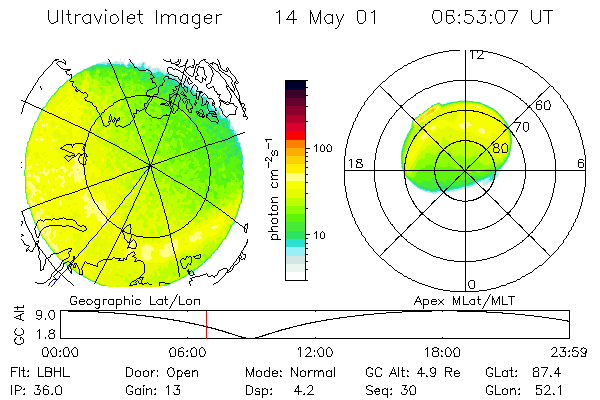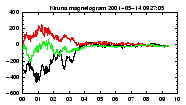


POLAR/VIS
EC
 |
POLAR/UVI
 |
Kiruna Magnetometer
 |
| PFRR ASC
|
HLMS
VHF Auroral Radar
|
|
Active aurora should produce a bright ring around the magnetic pole in the POLAR image (note: the UVI field-of-view is smaller than the planetary disk.) Auroral substorms will produce bright bulges, especially near midnight.
Auroral activity near Kiruna, Sweden will produce deflections on the magnetometer trace -- significant activity gets up to several hundred nT of deflection.
Auroral activity over Alaska will appear as light-colored returns on the HLMS VHF radar. If there are aurora over Fairbanks when the All-Sky Camera is working, then auroral arcs should be visible in that image.
The current VIS
image was acquired with the Earth Camera, one of three cameras in the
Visible Imaging System (VIS) which was designed and constructed at the
University of Iowa. The VIS is one of twelve instruments on the Polar satellite
of the NASA Goddard Space Flight Center. The VIS Principal Investigator
is Dr. L. A. Frank, and the Instrument Scientist and Manager is Dr. John
B. Sigwarth.
The current
UVI image is provided courtesy of the UltraViolet Imager team for NASA's
Polar satellite.
The current PFRR
All-Sky Camera Image and High
Latitude Monitoring System VHF Auroral Radar data are provided courtesy
of the Geophysical Institute of the University of Alaska at Fairbanks.
The Kiruna Magnetometer is operated
by the Swedish Institute of Space Physics, Kiruna, Sweden.